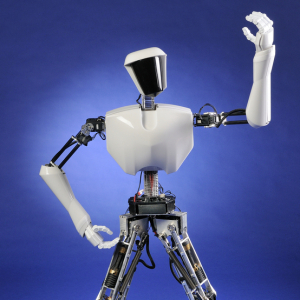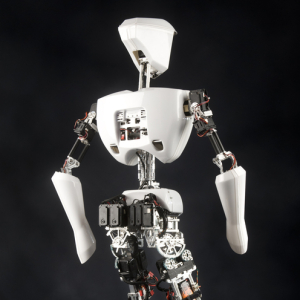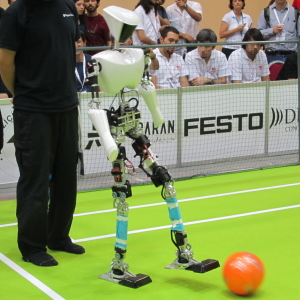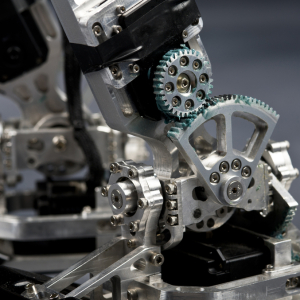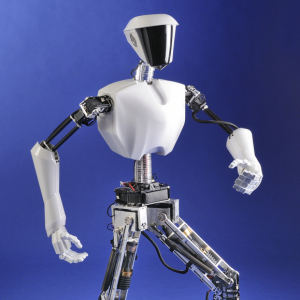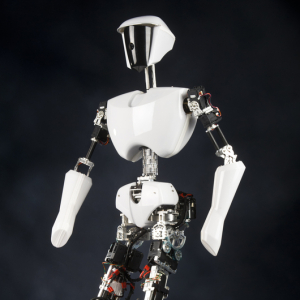CHARLI is the United States’ first full-size autonomous humanoid robot. It’s mechanical design has allowed experimentation into the effects of different mechanical configurations, mostly in the legs, on the performance of bipedal walking and balancing. CHARLI is capable of walking in all directions as well as turning, kicking, and performing gestures and simple upper body manipulation tasks. A variety of hands and grippers have been experimented with for various objects or goals.
Details and Specifications
CHARLI has undergone a variety of revisions and improvements since first being created around 2009-2010. The original CHARLI, often referred to as CHARLI-L (the L is for “lightweight”) was started using seed funding supplied by the Student Engineering Council. The first CHARLI can be identified by it’s legs, it has a fourbar linkage with a spring stretched across 2 corners to balance the torque required for knee-bending, allowing much smaller motors to reach a full range of motion. (ASME IDETC Publication reference) This original CHARLI had 21 DoF (5 in each leg, 4 each arm, 3 for the head) had a mass of 12.4[kg] and walked at 0.8[km/hr] using ZMP-based walking control on top of a custom robust sinusoidal gait pattern. The “lightweight” design goal was undertaken for a variety of reasons including safety, requirement of onboard power, available actuator limits, and low cost. In July 2010, Popular Science named CHARLI “America’s first true humanoid robot” due to it’s biological design and resemblance to humans.
As the next generation of the CHARLI series humanoid robots, CHARLI-2 improves stability and speed in walking, intelligence and autonomy, and soccer playing skills. CHARLI-2 is also designed to participate in the autonomous robot soccer competition, RoboCup, in the Adult size league. CHARLI-2 implements an impressive active stabilization strategy based on sensory feedback (filtered IMU angles, gyro rate readings and proprioception information based on joint encoders) Stabilizing torques at the ankle joints are applied successfully rejecting external disturbances. CHARLI-2 can be recognized by it’s legs, a complete optimized overhaul of the old spring-loaded fourbars. The redesign reduced the total mass to 12.1[kg] and increased walking speed to 1.4[km/hr] as well as demonstrating greater robustness, increasing the total DoF to 25, increasing the total actuator count to 32, and increasing battery-life runtime by 50%.
CHARLI-2 is honored “2011 Best Invention of the Year” by Time magazine, won the Louis Vuitton Best Humanoid Award (a.k.a. Louis Vuitton Cup) at RoboCup 2011, and won 1st place in AdultSize league for autonomous soccer at RoboCup 2011 (as well as many other awards)

